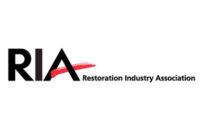
Before the water had started to recede following two days of torrential rains in early May, RIA member firms were on the ground in Nashville, Tenn., to assess the damage and help the city regain some semblance of normalcy.
Widespread flooding had caused damage to homes, businesses and famous landmarks throughout the city. Rowboats were used to traverse the flooded streets, help neighbors trapped by the sudden flooding and to triage restoration projects.
Among the firms on the ground were Belfor; Sharp & Robbins Construction; Asset Recovery Technologies; Royal Plus Disaster Kleenup; Mitigation Services, Inc.; First Restoration Services, Inc.; Compleat Restorations; Regency DKI, Rolyn Companies, Inc.; Epic Response, LLC; 1 Priority Environmental Services; American Technologies, Inc.; and Paul Davis.
Many of the larger companies set up command centers by their larger projects. These included tractor trailers of supplies and equipment; safety stations; trailers to hold office personnel, computers and other administrative necessities; tents for personal protective equipment distribution and cleaning; catering facilities and eating areas; fueling stations; portable toilets and staging areas for equipment.
The operations were like those of a finely tuned army prepared to move at a moment’s notice with each soldier knowing his or her responsibilities and what the mission required in order to be a success.
Teams of workers were on the job 24/7 in those first few days, working in places such as Opry Mills Mall, the Grand Ole Opry, the Country Music Hall of Fame, the Schermerhorn Symphony Center, the AO Smith Plant, in local hospitals, nursing homes, schools, hotels, office buildings, homes and other structures.
Kingston Springs Elementary School was the hardest hit school in the state. In a matter of minutes, the water level went from several inches to waist high, rushing through the building like the rapids on a water ride at an amusement park.
The school sustained significant water damage as the water level within the building rose to more than six feet. Among the casualties were the desks and furniture, all soft goods caught in the Category 3 water, a wide variety of electronic equipment, costumes and sets for plays and programs, and all of the school’s musical instruments except for one lone plastic recorder the music teacher had taken home with her.
Since flooding had forced the school to close about two weeks early, Belfor sponsored an end of the year picnic for the students and their families so the kids could receive their year books, say good-bye to their teachers and end their school year on a more positive note.
At the Schermerhorn Symphony Center, workers encountered a series of challenges due to the many areas affected by the flood waters, the building’s construction, a disappearing floor in the main symphony hall, piano lifts that raised the instruments into the concert hall, the flooring materials used throughout the building, and the value of the structure and its contents. Royal Plus utilized round the clock moisture mapping to monitor their drying progress and detect any problems, and was very creative in addressing the building’s issues.
Disposing of damaged contents was a major problem for the homeowners. FEMA and its designated haulers collected the materials and took them to one of four separation centers set up adjacent to local parks. Here, recyclable materials were separated from the non-recyclable, which were then taken to the local landfills.
Work will continue for weeks to come, but home and business owners are determined to rebuild and come back stronger than ever, and RIA members are proud of the role they are playing in these efforts.



